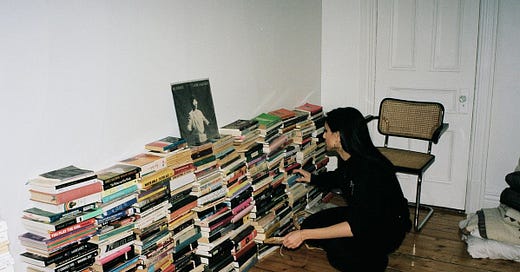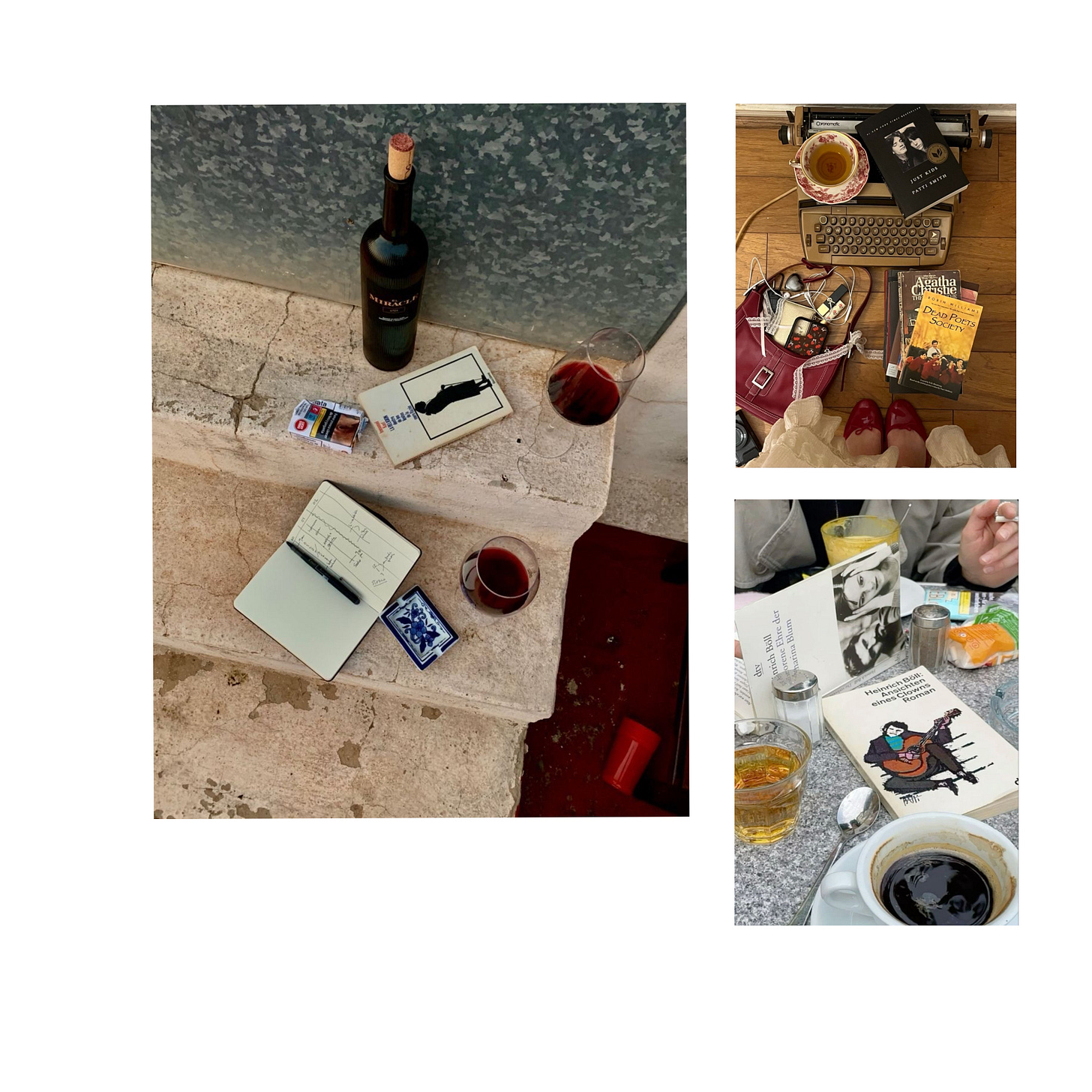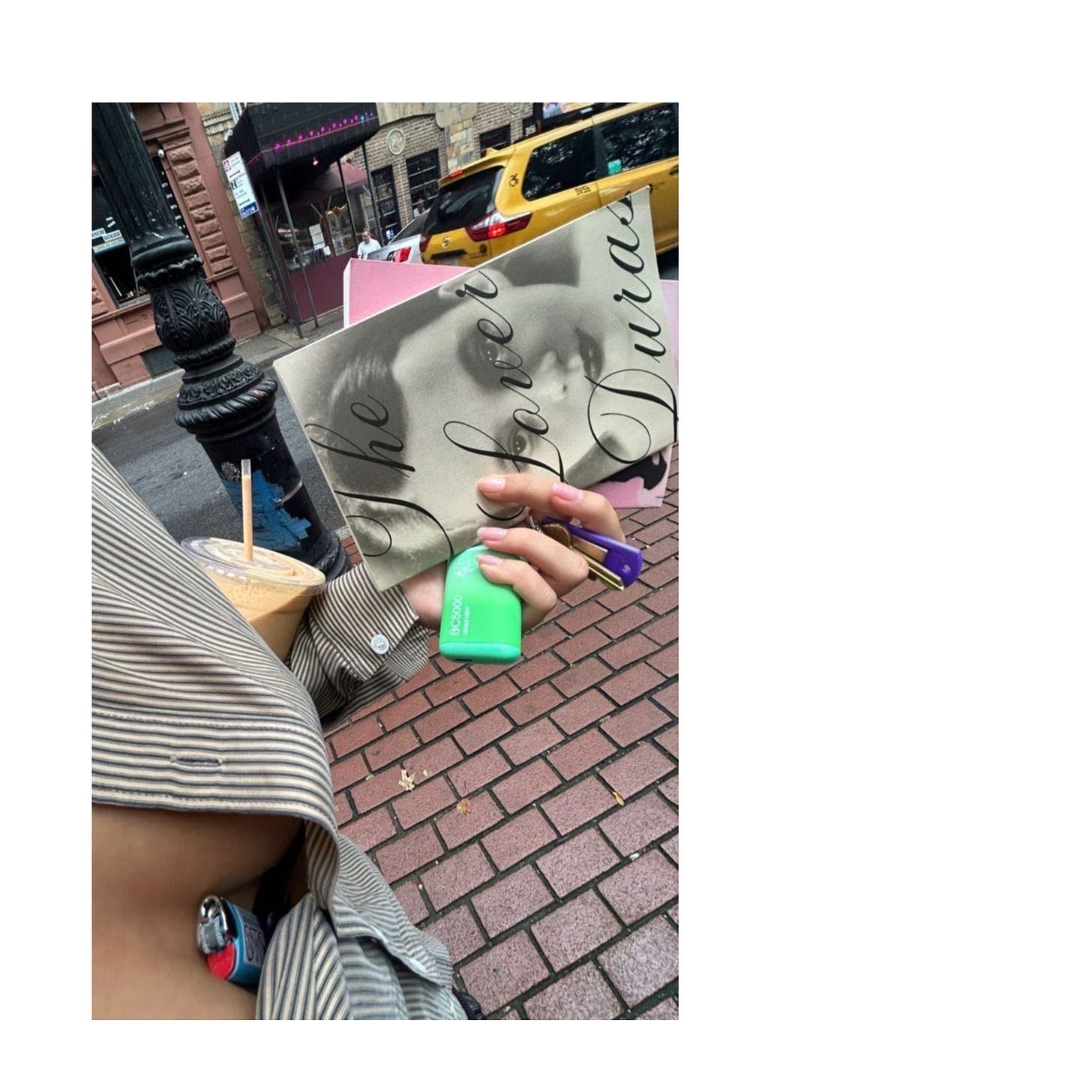Before You Are Buried by Recommendation Culture
On reconmending art/music/literature. Written by your literary it girl wannabe.
A few times a week, I compile the articles and papers I read and post them on TikTok (and if you found this Substack through my TikTok, hiiiiiiiii, thank you for subscribing). It was illusionarily therapeutic at first. I wrote at the end of each post that “I started this account because I believe we deserve content that’s handpicked by human who actually cares instead of being fed by algorithms.” I wrote it and believed that, for the foreseeable future, “content curation” is the sanest and most mutually beneficial way I can interact with social media outside of my Substack.
I'm definitely not alone. It is quite frequent and often inspiring to see other content curators, book recommendations, artist spotlights, and playlist curators on my FYP. And frankly speaking, I’m a sucker of such recommendation culture. I get the majority of my reading list online, I love a well-curated experience list, I watch “what’s in my bag” videos religiously, and I even appreciate the ads on my Instagram feed because 9 out of 10 times, I find the promoted item truly beautiful.
Of course, the perspective shifts when I’m now at the producing end. For each new role we step into, we are offered new perspectives and responsibilities. A lot more thought and ink need to be put in.
Reconmending as selling
The line between selling and recommending has blurred in the era of commodification. Publicity images (aka ads most of the time) have recasted our appetites, so even authentic and genius recommendations on art and literature need to be garish and well-packaged to be heard and received.
Here is the formula for an algorithm favored recommendation post on social media: It needs to be digestible, so there’s no room for a comprehensive analysis. It needs to be fun, so a simple syllabus won’t do. It has to be catchy, sensational, tasteful, valuable in a narrow sense, and preferably educational.
It has to be a vibe. Or else it has little to no chance of being picked up by the algorithm and the picky audiences behind those screens.
One might argue, if the art itself is good enough, shouldn’t it already be catchy, sensational, tasteful, and valuable, and therefore be able to stand out naturally?
It might be true if audiences didn’t just scroll away within two seconds or after 200 words max. It truly leaves no room for art to be received, let alone digested and appreciated.
When I first started posting article recommendations on TikTok, the title of the series was “Articles That Deserve Your Attention.” Total facts. I later changed it to “Articles You Should Read.” Pushy but with more motive for people to stay and watch the whole thing. Then I “optimized” it to “Articles That Will Make Your Life Better,” an untestable, empty promise. But videos with this title got the most views, and people in the comments kept saying things like, “Thank you for putting this together,” “This is so helpful,” “I’m glad I came across your account.”
So I was like, “Fuck it, who cares?”
It turns out I do. That’s why I’m writing to you.
Recommending, signaling and the literacy cool girl
I probably shouldn’t have jumped into recommendation culture so quickly, knowing my desire to become THAT “literary cool girl” prototype is so bad.
Taste has always been understood and perceived both publicly and privately. It’s personal as it’s one’s own judgment, and only the self can truly understand it. It’s also public for communicating taste is how we build social norms and find shared agreement on what’s good or bad, assisting us to find the social group we fit in.
This balance between personal and public taste was okay until we entered an age where almost every form of self-expression has been entangled into personal brand that will later commodified either voluntarily or involuntarily. Imagery-based social media has magnified this process.
Taste is naturally a big part of our personality/personhood, and the personal brand narrative brings both personality and taste under scrutiny. If we live in a society where we are constantly surveyed by ourselves and others against commodity, social, and cultural value charts, then of course we would want to make sure that this part of our personal brand, once very private, is well curated. For the same reason, we are all suckers for other people’s well-curated tastes. If I see a cool girl sitting in her cool home with cool interior elements recommending a book (the book of the summer) with a cool cover, I guarantee you’ll catch me adding it to my TBR list within two seconds. And again for this reason, I sometimes catch myself thinking about the type content and art I want to be associated with and base my recommendations on that. Like i said, it has to be vibe.
A part of me is dying to be that literary cool girl because being one thing is not enough that we need to cool, hot, smart, cultured, and updated all at the same time.
What we frequently ignore is that a book, a piece of artwork, or a song is slightly distorted once it becomes part of some type of “cool people” starter pack. People are not just giving recommendations on what to consume; consciously or unconsciously, they (or should I say we) are also recommending how to consume it and a matching aesthetic. A classic example: books lying on a messy table, unfinished coffee, a pastry with two bites taken, a dying cigarette between fingers, often set in a local corner coffee shop somewhere in New York, London, Paris, Berlin, or Copenhagen. The book and the person decorate and lend meaning to each other, in a sense that they also explain each other. The setting where the book is recommended, the way it is recommended, and the aesthetic the recommender “promises” become a subtitle of the book. And books become decor.
The audience (including me) eats it up.
With that, what we want to get out of the art and what we get out of them changes because we enter them with a perception.
Recommending and Possessing
I miss browsing the library shelves. Childhood, summer afternoons always seemed on the verge of melting away until saved by the fans in the library. I would close my eyes, count down random numbers while moving down the aisle, brushing my fingers along the spines of books, until they led me to the one I would take home. I flipped to random pages, jumped to random titles, easily distracted by another book with a prettier cover. There was no pressure to finish a book or worry about how many books I needed to read. I picked them up and dropped them down casually, like a kid in a summer garden.
We now use FOMO and jealousy to replace wonder and getting lost, which are perhaps some of the most powerful and nourishing human experiences. We feel FOMO and jealousy because we’ve come to the untested realization that knowledge and experience can be possessed like objects and used decoratively.
The clock is ticking, time is a “resource,” and we’ve got to shovel the “Summer Beach Read Essentials,” “10 Essays That Will Change the Way You Think Forever,” and that one indie band gaining its long-deserved popularity down our throats before everyone in our social group has consumed them. We look for recommendations because we need to consume the best of the best. Jump on this express line and skip the effort of wondering.
We grab, we collect, we possess, until we realize that possessing doesn’t actually mean owning nor internalizing. The recommendations given to us by the coolest person or the most reputable one don’t always lead us to where we’re supposed to be.
I want to pause here for a sec. Everything I described above isn’t necessarily negative or ignorant. I would beg (literally) to have Bella Hadid carrying my book if I ever publish one. In most cases, it’s not harmful to the writer (they sell more copies) or readers (they read more books). This isn’t a praise for gatekeeping or a critique of performative intelligence (on this topic, check out my essay Come Join the Pretentious Girl Club). Nevertheless, it’s worth noticing and acknowledging what recommendation culture is doing to us and how it changes the way we experience art.
For me personally, I have reached the conclusion that I’m not in a position to sell things that perhaps aren’t meant to be commodified or associated with such publicity. My solution is to skip the unnecessary personal feelings and marketing wording when making recommendations (art specifically) on Substack. To me, if I can’t provide some level of analysis or don’t have any connections to offer, then a simple syllabus is the best way to make a recommendation — title, name, and little to no explanation.
If we are what we consume, then each time you take my recommendation, you’re taking a small piece of me that originally belonged to millions of others. I hope you’re choosing the right part.






u put words to an experience i've come across as a newer substack reader: recommending products, especially luxury products, becomes a way of selling and signaling a privileged way of life. i actually got to a point where i had to stop reading substack cuz it was fueling a vicious cycle of online shopping. *capitalism and white supremacy* i wonder if people think that because it's substack, it's inherently more literary, less obscenely influencer-y than instagram or tiktok? when honestly there's plenty of shopping lists on here, just written in a way that's somewhat self-conscious but still unaware. idk if this makes sense, but i think some folks with a big following on substack do see themselves a lil too highly lol.
i love this so much. echoing what is written in Filterworld — as our feeds flatten into similarity, we crave a human-curated/personalised experience of the world. i’m learning to slow down, not compare the amount i read, what i’m doing with my social media and interacting with the world with a genuine approach. i did come from Tiktok! please keep doing what you do, i really enjoyed this ;-)